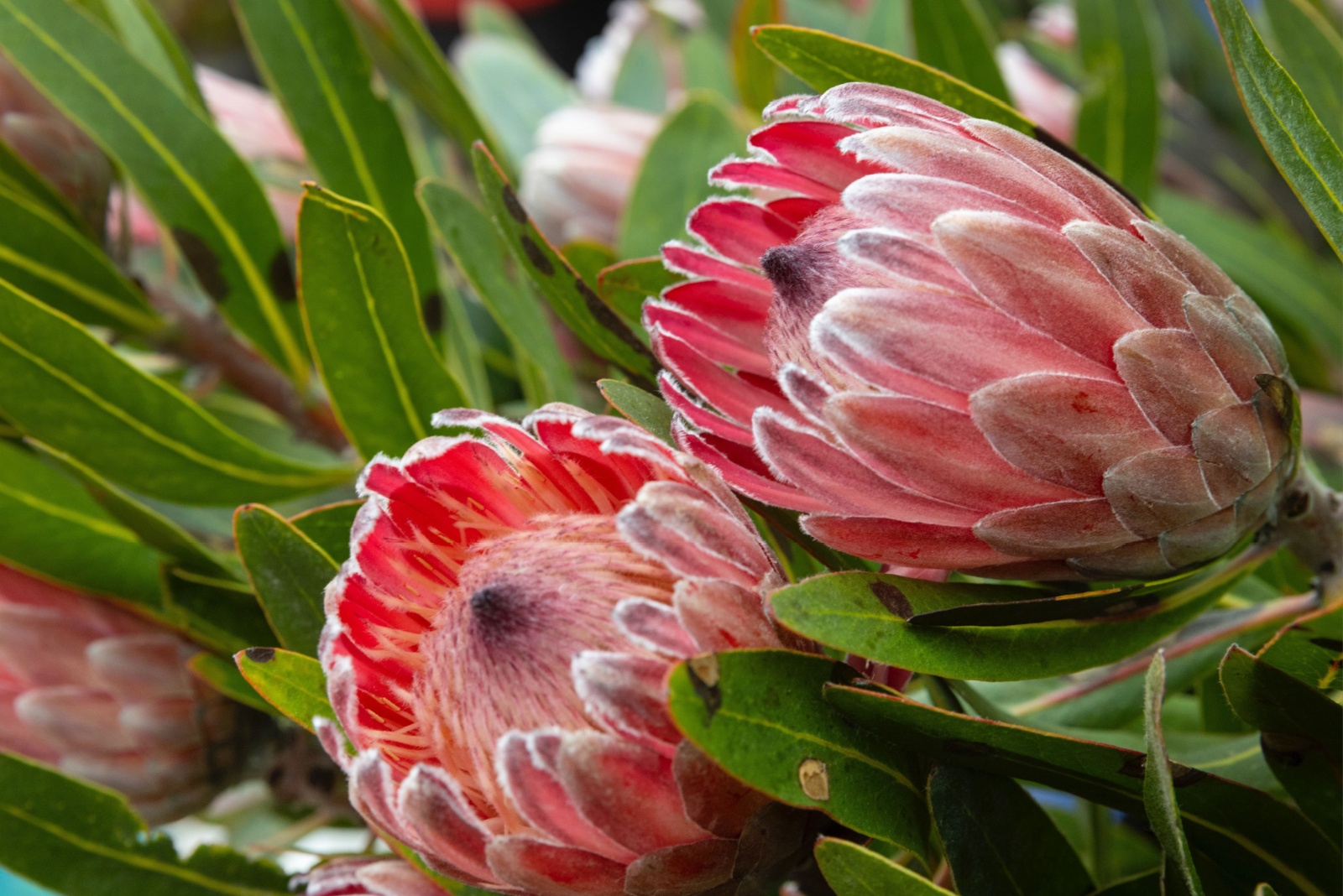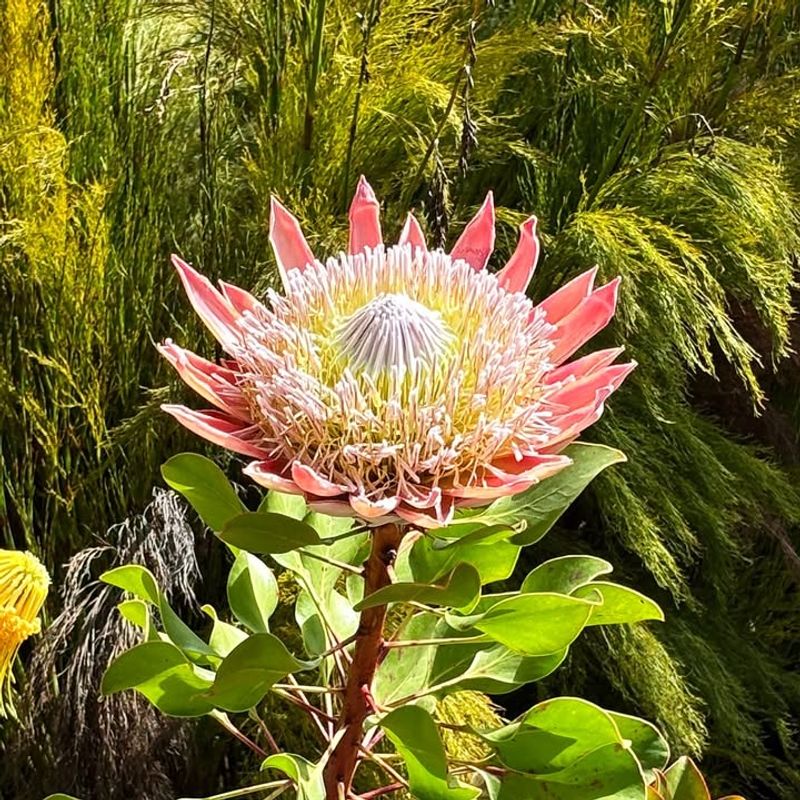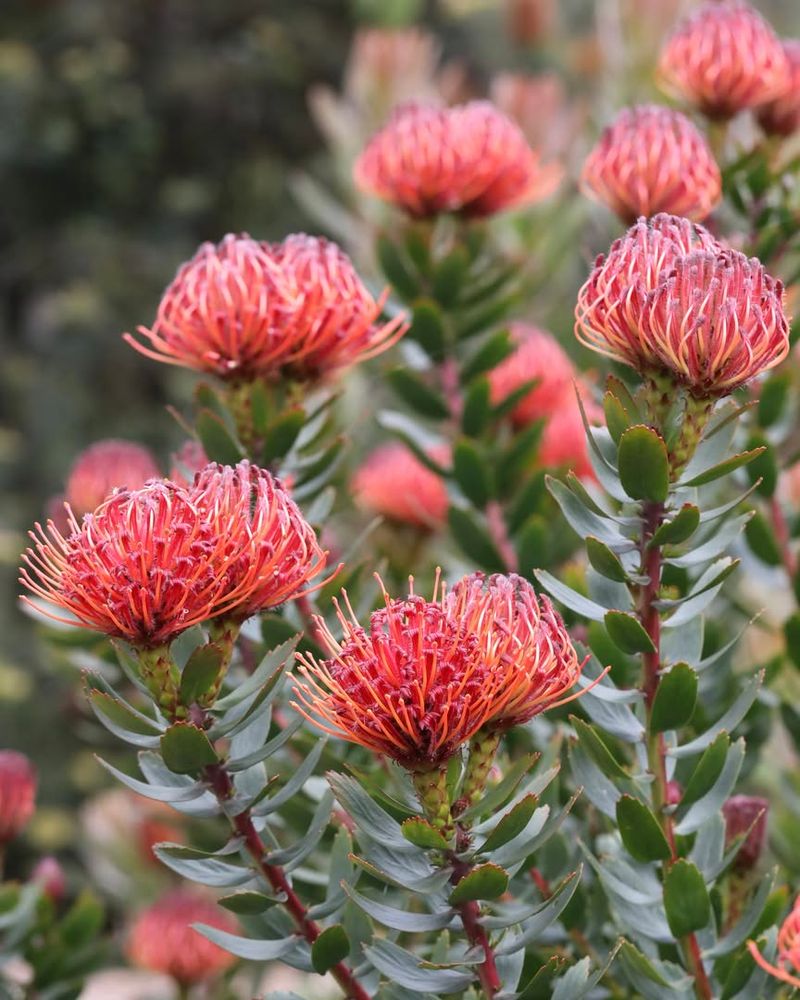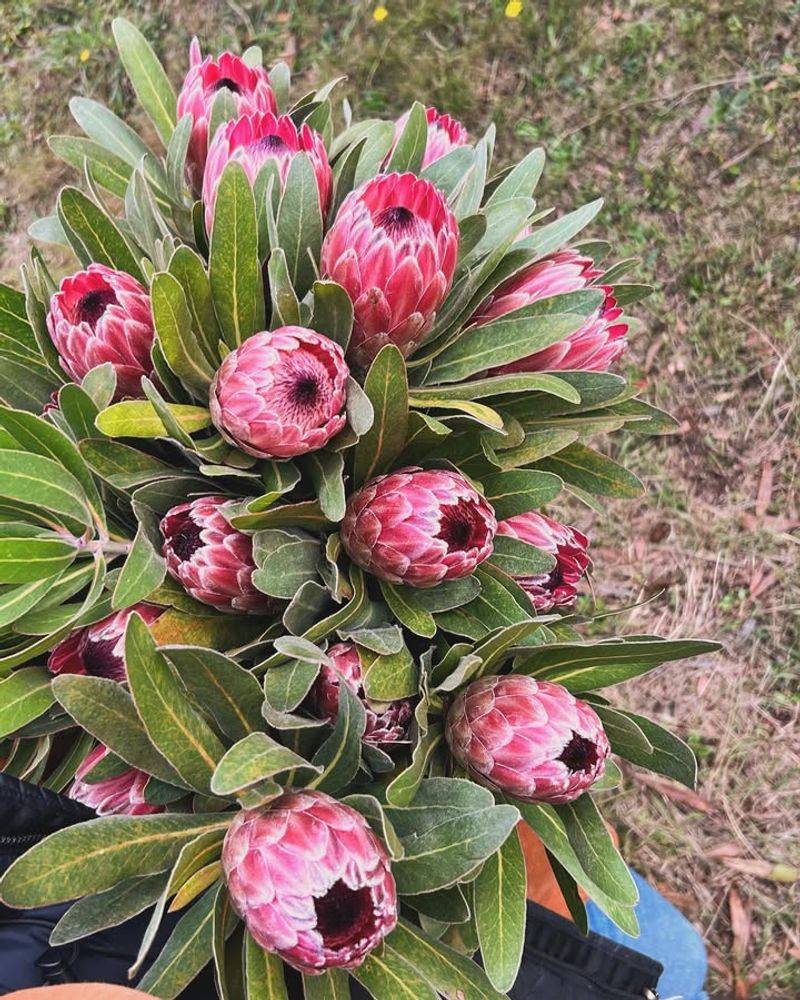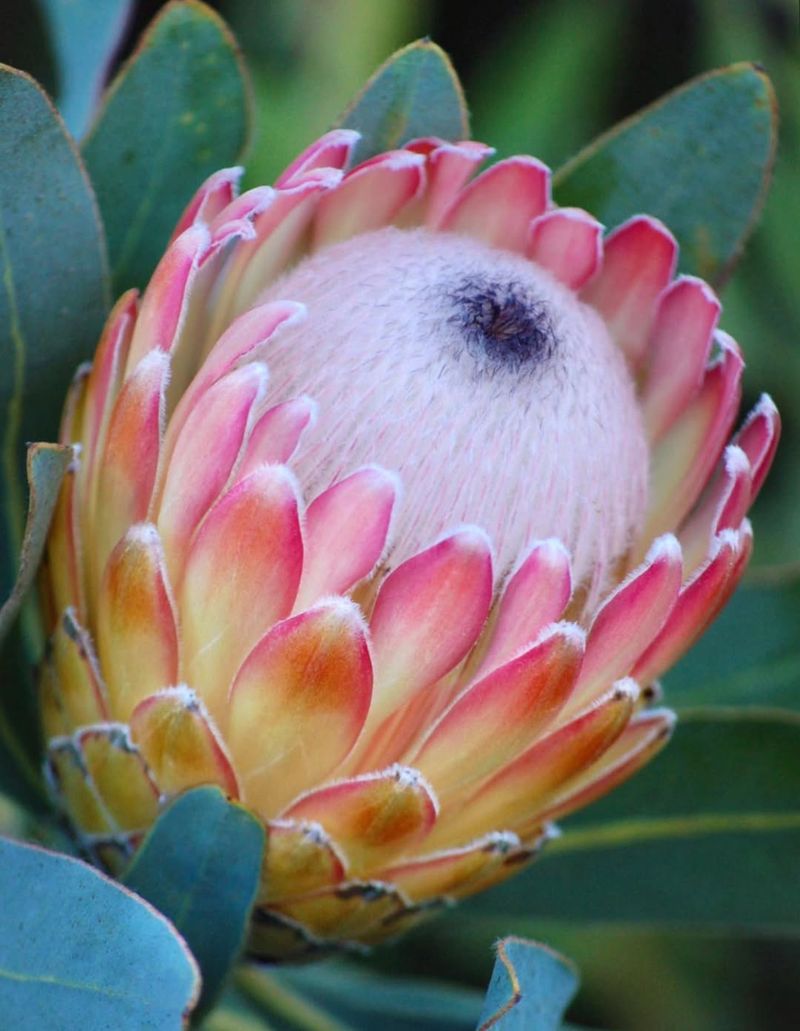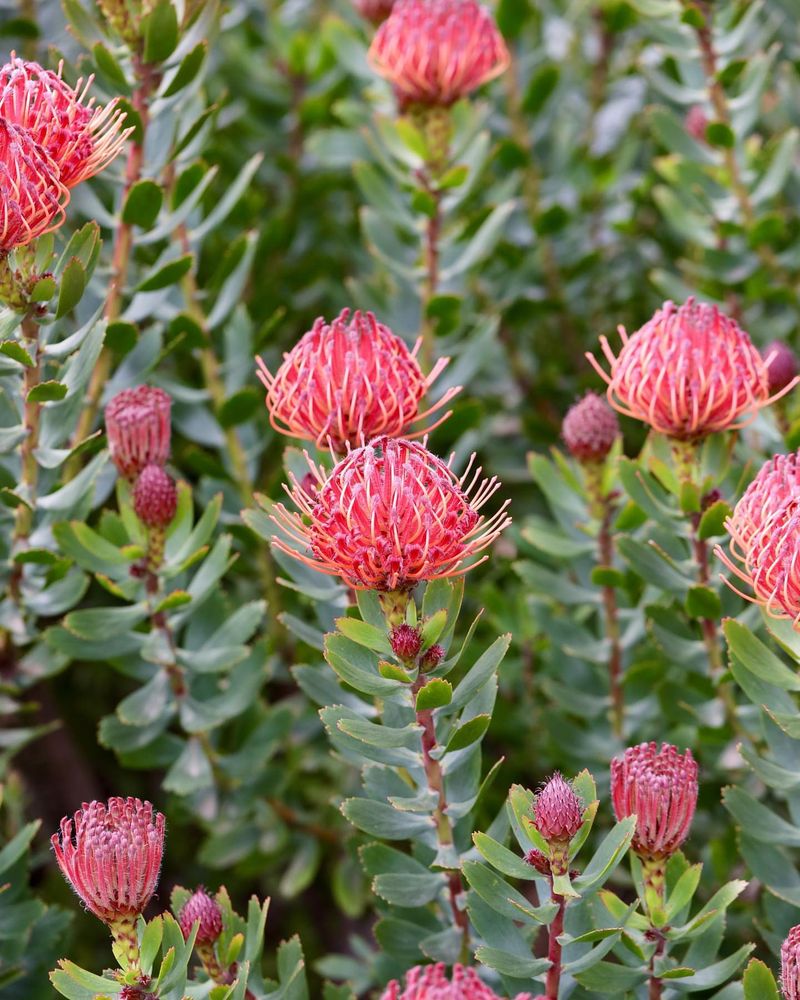Proteas burst into California winters like sparks from a campfire, bold and full of attitude. Their sculpted blooms and sunset shades shake off cold spells and turn quiet landscapes into scenes that feel straight from a warm coast.
Gardeners who crave color in the off-season often reach for these standouts, and each plant delivers a glow that brightens even the chilliest day.
King Protea (Protea cynaroides)
Picture a flower as big as a dinner plate, and you’ve got the King Protea. This showstopper produces massive blooms that can reach up to 12 inches across, with layers of pink and cream petals surrounding a fuzzy center.
Native to South Africa’s mountains, it earned its royal name for good reason. The flowers last for weeks in your garden and even longer as cut arrangements indoors.
Plant it in well-draining soil with full sun exposure, and watch hummingbirds visit regularly throughout winter.
Pincushion Protea (Leucospermum cordifolium)
Imagine a firework frozen in time, bursting with orange and red spikes that reach toward the sky. Pincushion Proteas get their quirky name from the pin-like stamens that stick out in all directions from a rounded center.
Blooming from late winter through spring, they attract butterflies and bees like magnets. Each flower head contains dozens of individual blooms packed together, creating an explosion of warm color.
They prefer coastal conditions like in California and sandy soil that drains quickly after rain.
Pink Ice Protea (Protea grandiceps)
Soft as cotton candy but tougher than it looks, Pink Ice lives up to its frosty name. The silvery-pink bracts surrounding each bloom shimmer in winter sunlight, creating an almost magical effect in your garden beds.
Growing up to five feet tall, this compact variety works perfectly in smaller spaces or container gardens. Its pastel colors provide a gentle contrast to bolder protea varieties.
Blooms appear from December through March, right when you need cheerful colors most in California.
Susara Protea (Protea magnifica)
Bold and beautiful, Susara Protea commands attention with its deep magenta-pink blooms that practically glow against gray winter skies. Each flower sits atop a strong stem, making them excellent choices for cutting and bringing indoors.
The bowl-shaped bracts curve inward slightly, protecting the creamy center like cupped hands. This variety tolerates more water than other proteas, though it still prefers dry conditions.
Plant several together for a dramatic display that neighbors will definitely notice and admire.
Carnival Protea (Protea neriifolia)
Why settle for one color when you can have several in your stunning California garden? Carnival Protea lives up to its festive name by mixing red, pink, orange, and cream in each individual bloom.
The pointed bracts create a spiky crown effect that looks almost prehistoric. Blooming heavily from winter into early spring, this variety produces flowers continuously rather than all at once.
It handles coastal winds better than most proteas and actually prefers afternoon breezes. Deer tend to avoid it, which is a bonus for hillside gardens.
Blushing Bride Protea (Serruria florida)
Delicate and romantic, Blushing Bride brings an elegant softness that contrasts beautifully with bolder protea cousins. The papery white and pale pink bracts look almost translucent in morning light, resembling vintage wedding decorations.
This variety grows as a bushy shrub with feathery, silvery foliage that stays attractive year-round. Multiple flowers cluster together on each stem, creating bouquet-like arrangements naturally.
It requires excellent drainage and struggles in heavy clay soils, so amend your planting area generously with sand.

